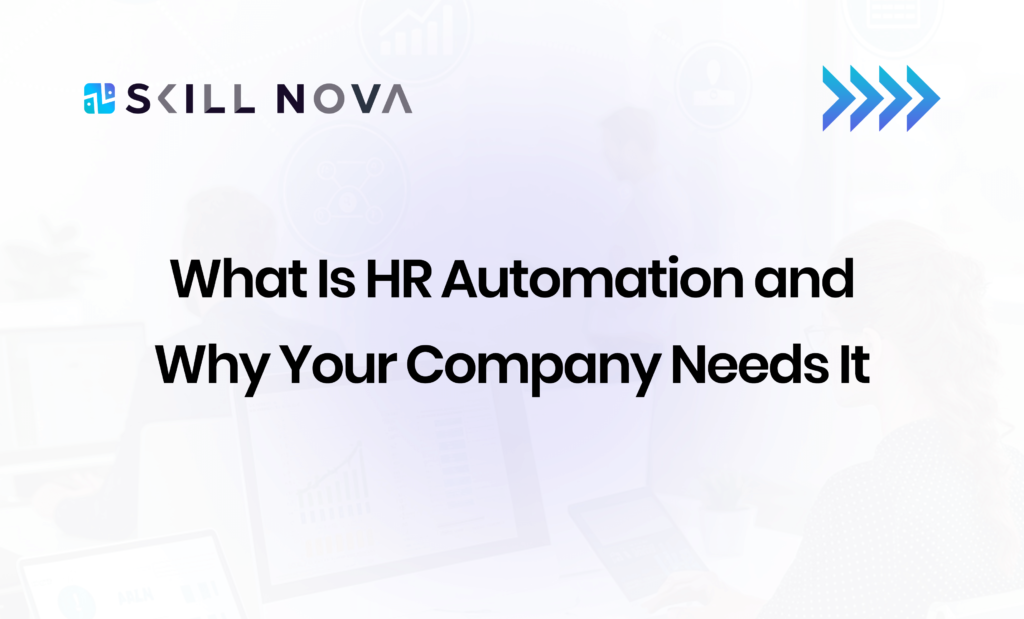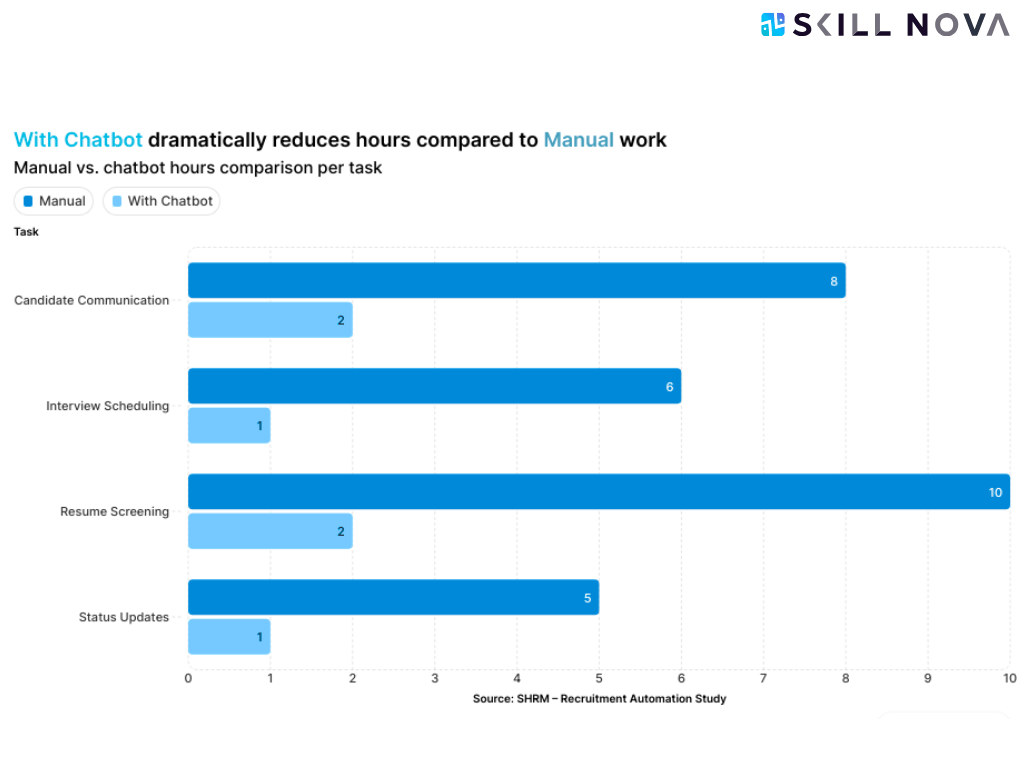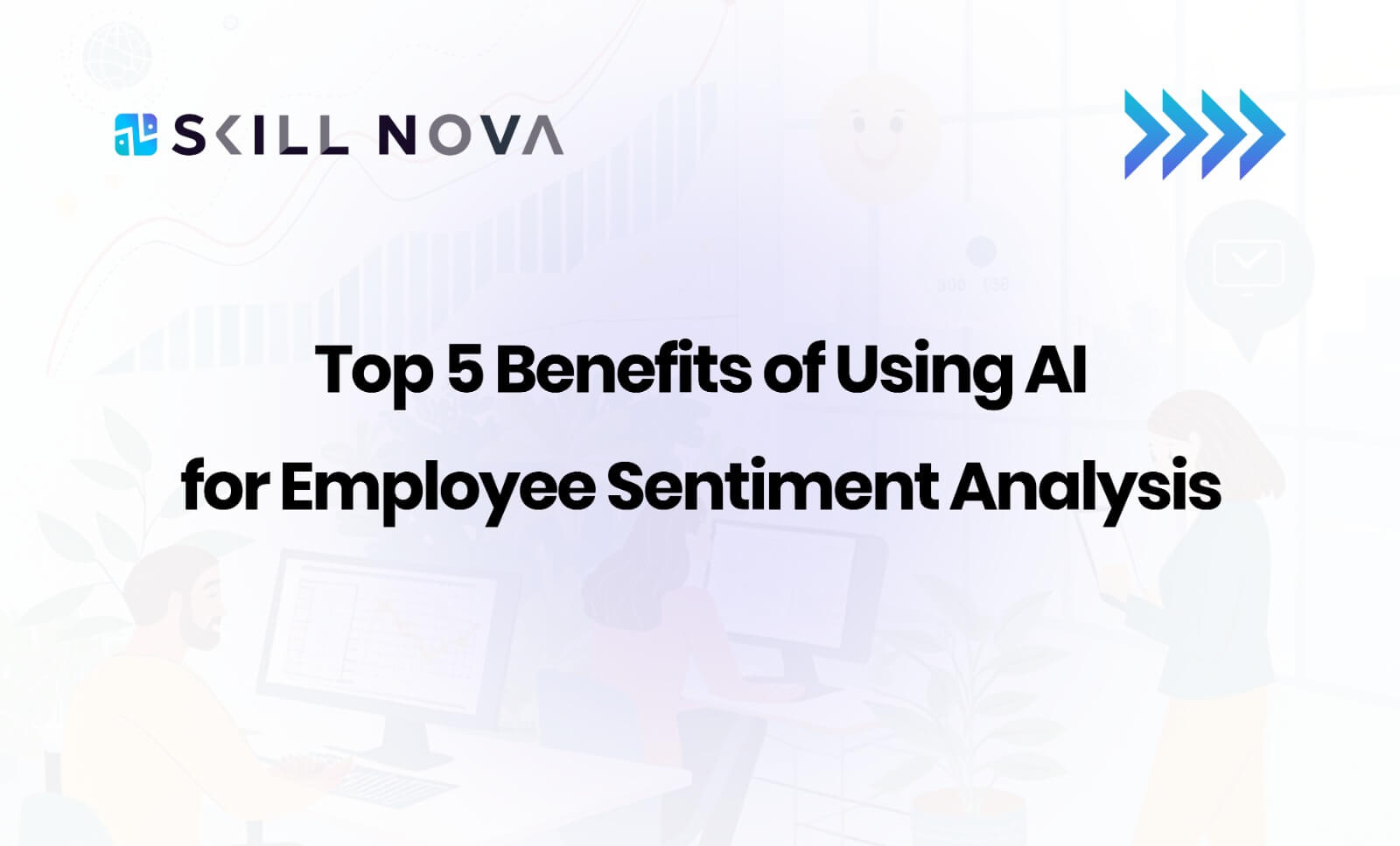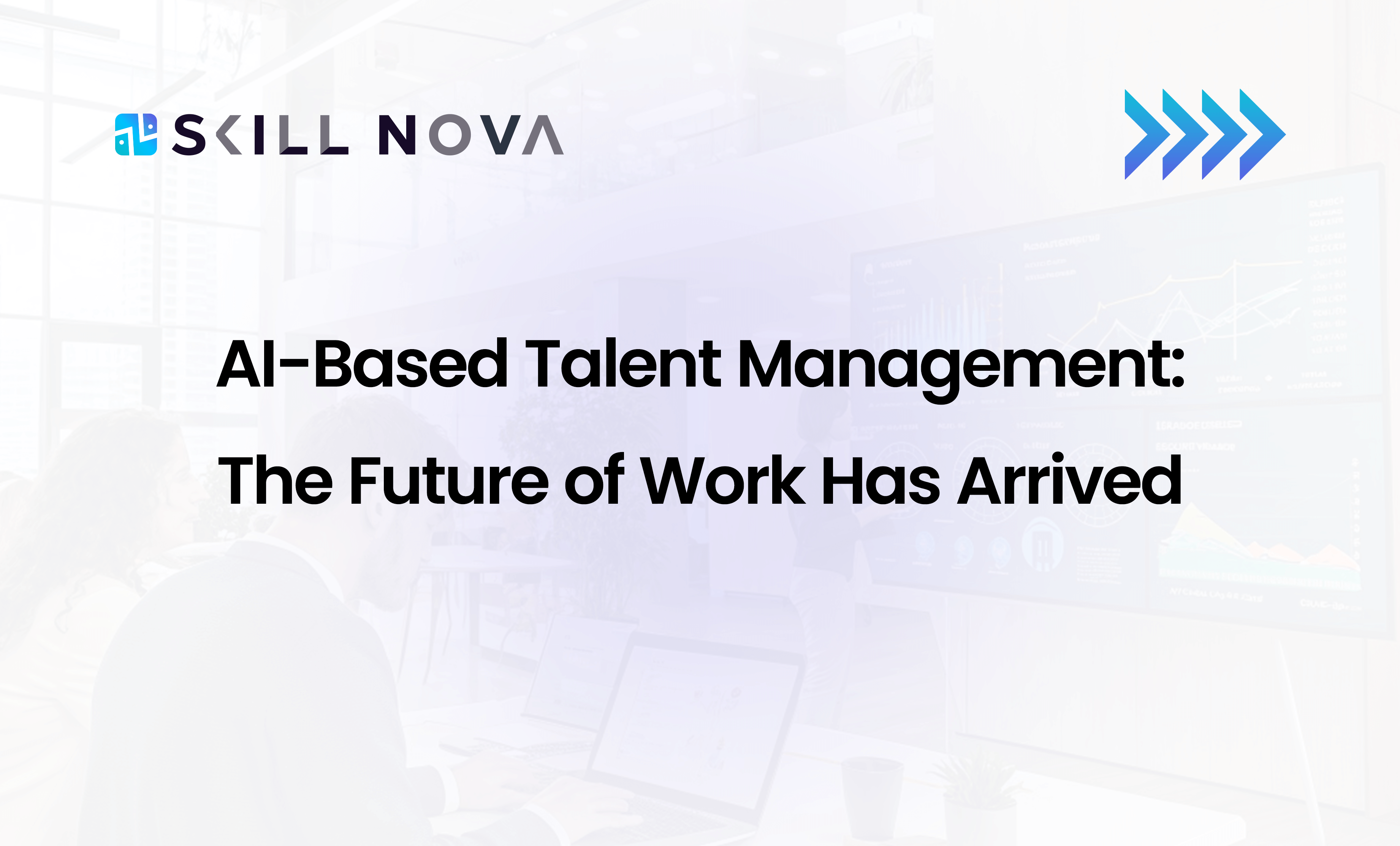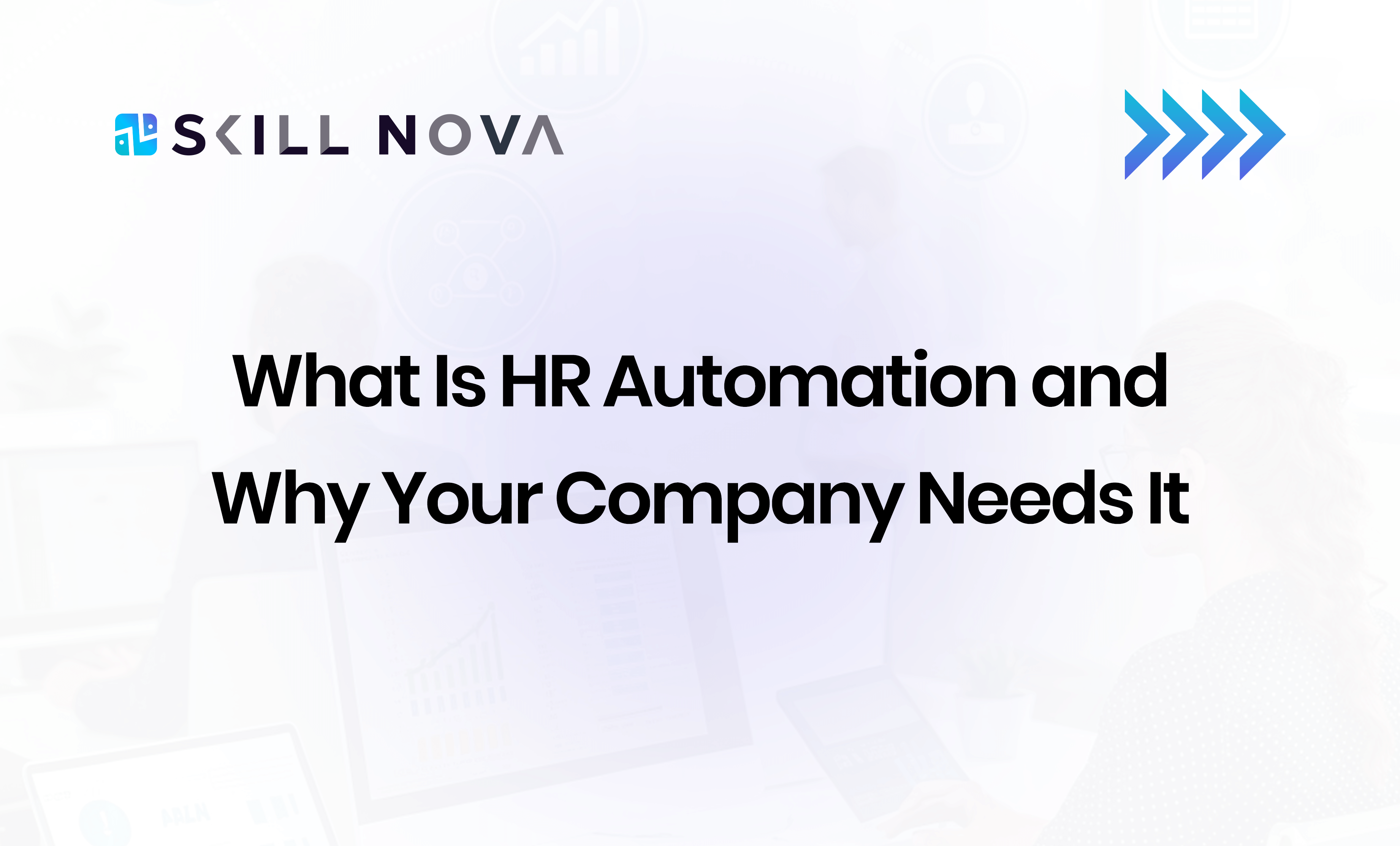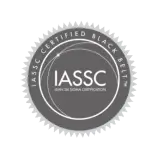If you’ve ever drowned in onboarding paperwork or juggled endless interview schedules, you’ve probably asked yourself: Isn’t there a smarter way? There is—it’s called HR automation.
In today’s fast-moving, data-driven world, knowing what is HR automation isn’t just helpful, it’s crucial. Whether you’re a lean startup or a global enterprise, automating HR isn’t just a tech trend; it’s a game-changer in managing your most valuable resource: people.
Let’s quickly unpack what is HR automation, why it matters, and how your company can use it to streamline tasks, boost productivity, and create a better employee experience, all without the manual mess.
An experience-driven automated onboarding process increases new hire retention by 82% and productivity by 70% (Source: HCI)
Table of Contents
ToggleWhat Is HR Automation?
HR automation uses software, AI, and digital tools to streamline HR tasks like hiring, onboarding, payroll, and performance management.
Put simply, it’s your HR team’s smart assistant, eliminating manual work to make processes faster, smarter, and more accurate.
“According to a 2023 report by Deloitte, 73% of organizations have either implemented or are currently developing some form of HR technology transformation, including automation and AI-powered systems. This trend reflects the urgent shift toward more efficient, data-driven HR operations.”
What Is HR Process Automation?
HR process automation takes the concept a step further. It focuses on end-to-end process optimization rather than just individual task automation. For example:
- Automating the entire onboarding journey, from sending welcome emails to enrolling new hires in training.
- Using bots for resume screening and interview scheduling.
- Creating smart workflows that trigger benefits enrollment based on role or region.
Essentially, what is HR process automation? It’s the automation of complete workflows to reduce friction, human error, and bottlenecks in everyday HR operations.
What Is Automation in HR—And What Does It Look Like?
| HR Automation Feature | What It Does |
| AI-Powered Chatbots | Instantly answers employee questions about PTO, holidays, benefits, and more—24/7. |
| Digital Document Management | Replaces paper files with secure, cloud-based contracts, forms, and records. |
| Automated Time Tracking & Payroll | Tracks work hours, calculates pay, ensures tax compliance—no spreadsheets required. |
| Performance Tracking Dashboards | Delivers real-time feedback, continuous analytics, and automates performance reviews. |
A 2023 McKinsey report found that 56% of HR departments now use at least one form of AI or automation in their daily tasks—an increase of 17% from just two years ago.
What Is Automated HR Experience?
Now let’s talk experience, because automation isn’t just about internal efficiency. It’s also about making things smoother and more intuitive for employees and candidates.
A fully automated HR experience means that from the moment a job candidate hits “Apply,” to their third work anniversary review, their interactions are seamless, personalized, and hassle-free.
So, what is an automated HR experience in practice?
- Candidates get instant confirmations and interview slots.
- New hires complete digital onboarding without printing a single form.
- Employees get real-time updates about goals, raises, and learning opportunities.
This not only saves time but also builds trust and engagement—two key drivers of retention.
Benefits of HR Automation for Your Company
Let’s get to the meat of it—why does your company need HR automation? Here are some undeniable advantages:
“1 in 3 organizations are using AI to streamline recruitment and automate candidate search. Source: SHRM’s Voice of Work Research Panel. “
1. Increased Efficiency
Manual tasks like entering payroll data or tracking leave requests consume countless hours. Automation reduces administrative workload, freeing HR professionals to focus on strategic initiatives.
According to Forrester Research, automation can reduce HR administration costs by up to 30%.
2. Improved Accuracy
Humans make mistakes, especially when juggling spreadsheets and forms. Automation ensures data consistency and minimizes compliance risks.
3. Better Compliance & Reporting
Automated systems help maintain compliance with labor laws, taxes, and industry standards. They also generate detailed reports that are audit-ready.
4. Faster Hiring
HR workflow automation tools accelerate the recruitment cycle from sourcing to onboarding—helping you secure top talent before the competition does.
5. Enhanced Employee Experience
Frictionless self-service portals and faster response times lead to happier employees and a stronger workplace culture.
By 2025, 70% of employees will interact with AI-powered tools daily. (Source)
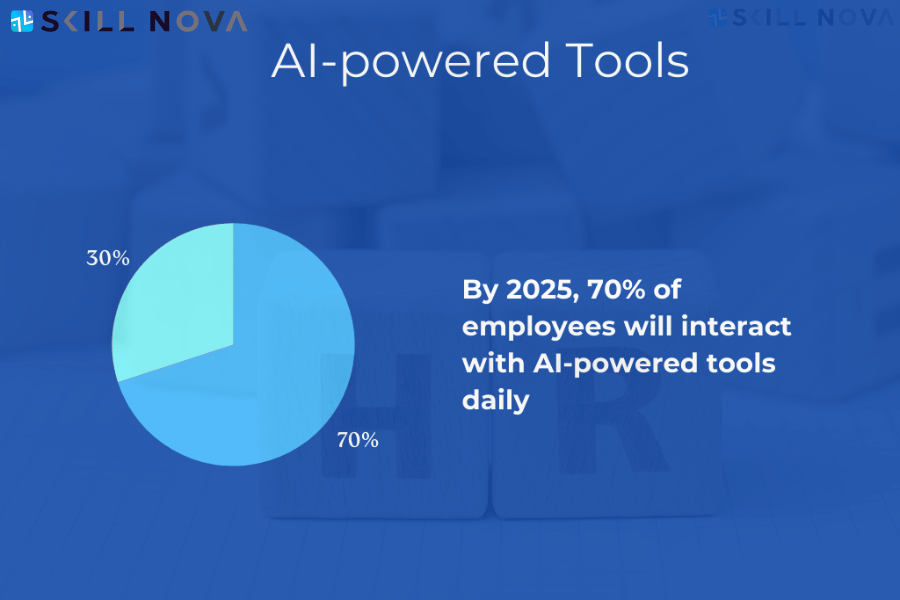
How to Start Your HR Automation Journey
Getting started with HR automation doesn’t have to be daunting. Here’s a step-by-step approach:
1. Audit Your Existing Processes
Identify bottlenecks, time sinks, and compliance pain points. Focus on high-impact areas first, like onboarding, payroll, or leave management.
2. Set Automation Goals
Are you aiming for speed? Accuracy? Employee satisfaction? Define KPIs before choosing tools.
3. Choose the Right Tools
Selecting the right HR automation platform depends on your company’s size, goals, and technical requirements. Here’s a simplified comparison table with a checklist of key HR features for each tool:
| Feature / Tool | BambooHR | Workday | Gusto | Zoho People | Skillnova |
| ✅ Core HR (Employee Database) | ✔️ | ✔️ | ✔️ | ✔️ | ✔️ |
| ✅ Payroll & Benefits | ❌ | ✔️ | ✔️ | ❌ | ✔️ |
| ✅ Performance Reviews | ✔️ | ✔️ | ❌ | ✔️ | ✔️ |
| ✅ Onboarding | ✔️ | ✔️ | ✔️ | ✔️ | ✔️ |
| ✅ Leave Management | ✔️ | ✔️ | ✔️ | ✔️ | ✔️ |
| ✅ Time Tracking | ✔️ | ✔️ | ✔️ | ✔️ | ✔️ |
| ✅ AI & Automation | ⚪️ | ✔️ | ⚪️ | ⚪️ | ✔️ |
| ✅ Custom Workflows | ⚪️ | ✔️ | ❌ | ✔️ | ✔️ |
| ✅ Ease of Use | ✔️ | ⚪️ | ✔️ | ✔️ | ✔️ |
| ✅ Ideal For | Small-Mid Biz | Enterprise | Small Biz | Budget Teams | Modern HR Teams |
Legend:
✔️ = Included
❌ = Not included
⚪️ = Limited or Partial.
4. Integrate & Train
Ensure your HR tech stack works seamlessly with other business systems like CRM, accounting, or Slack. Invest in user training to ensure adoption.
5. Monitor & Optimize
Collect feedback, analyze data, and tweak your processes regularly. Automation isn’t a one-and-done solution—it’s a continuously evolving asset.
The Future of HR Is Automated
What Is HR Automation? HR automation is the tech-powered boost your HR team didn’t know it needed—until now. In a fast-paced, talent-first world, companies that automate stay ahead by cutting costs, streamlining processes, and attracting top talent effortlessly.
It’s not about replacing people—it’s about empowering them with smarter workflows and more time for impactful work. Whether you’re just starting or scaling fast, now is the time to invest in automation that supports both your people and your growth.
And the best part? HR automation doesn’t replace humans. It empowers them, freeing up time for high-impact work, meaningful connections, and strategic growth.
Because the future of HR isn’t just digital. It’s automated—and it starts now.
